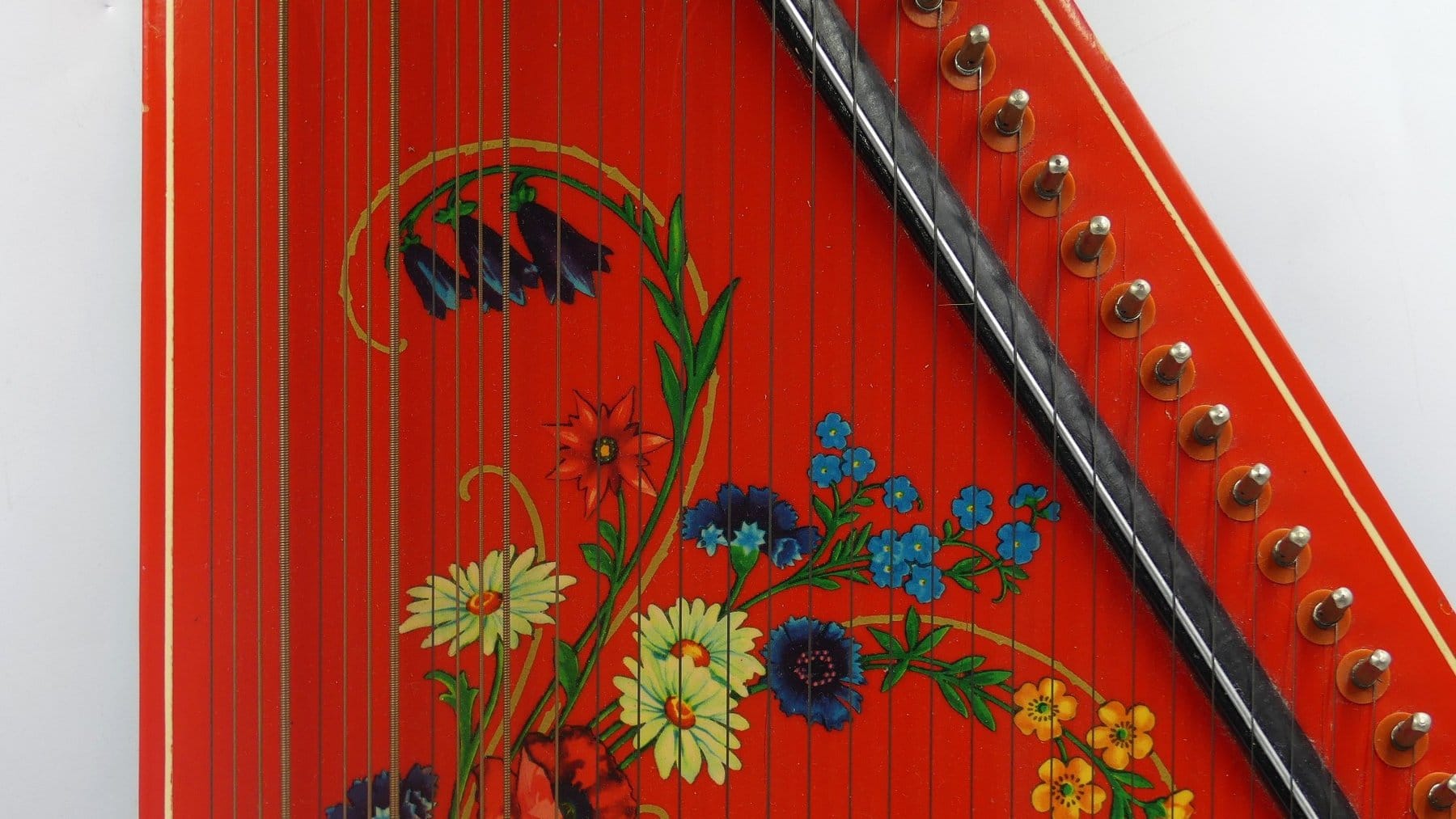Prepare to be captivated by the cittern, an instrument with a unique charm and a rich history. This guide will unveil the enchanting melodies and fascinating stories of this pear-shaped wonder, showcasing its enduring appeal across centuries. From medieval halls to modern folk music, the cittern’s journey is a testament to the power of music to transcend time.
Unveiling the Cittern’s Past: A Journey Through Time
To truly understand the cittern, we must journey back to the medieval period. Imagine knights, castles, and the sounds of the cittern’s ancestor, the citole, echoing through grand halls. By the time the Renaissance dawned, the cittern had become a musical sensation. Unlike the rounded lute, its flat-backed design made it more affordable and accessible, democratizing music for the masses.
[The impressive strength of the flitch beam helped us when we needed to carry heavy loads.]
Crafting the Sound: Anatomy of a Cittern
The cittern’s allure lies in its elegant simplicity. A pear-shaped body, a carefully fretted neck, and metal or wire strings stretched taut over a bridge—these elements combine to create its distinctive voice. The cittern’s sound is both delicate and powerful, capable of expressing a wide range of emotions.
From Renaissance Courts to Modern Melodies
During the Renaissance, the cittern was a musical chameleon, adapting effortlessly to various genres. It graced dance halls, accompanied folk songs, and even found its way into popular tunes. The cittern’s versatility made it suitable for both solo performances and ensembles, captivating audiences with its wide-ranging appeal.
The 20th century witnessed a resurgence of interest in early music, breathing new life into the cittern. Today, skilled artisans, known as luthiers, continue to craft and refine this captivating instrument, ensuring its legacy lives on. From early music ensembles to contemporary folk musicians, the cittern continues to find its place in the modern world.
Allure of the Cittern: A Sound That Captivates
The cittern’s sonic signature is a captivating blend of delicate high notes and a warm, rich bass. This dynamic range allows musicians to express a spectrum of emotions. Whether it’s a tender melody or intricate harmonies, the cittern’s sound lingers long after the last note fades.
Music for All: The Enduring Appeal
One of the most enduring aspects of the cittern is its accessibility. Just as it was in the Renaissance, the cittern remains relatively affordable today, making it an appealing choice for both seasoned and aspiring musicians. Its approachability continues to welcome new generations to experience the joy of music making.
Beyond Tradition: The Evolving Cittern
While steeped in history, the cittern is not frozen in time. Modern luthiers and adventurous musicians are constantly exploring its potential. Experimenting with innovative designs, novel materials, and even new tuning systems, they push the boundaries of the cittern’s sonic palette, ensuring its relevance in contemporary music.
A Living Legacy
More than just an instrument, the cittern embodies the enduring power of music and human creativity. Its sound, accessibility, and versatility continue to inspire musicians and captivate audiences. The cittern’s legacy is far from over; it’s a story still being written, connecting us to a rich musical past while embracing the sounds of the future.
Cittern vs. Lute: Unveiling the Differences
While both the cittern and lute share roots in the Renaissance period, they possess distinct personalities and sonic qualities. Think of them as musical siblings with unique charms and quirks.
Their construction provides the first clue. The cittern, typically carved from a single piece of wood, boasts a sturdy, straightforward design. The lute, with its body meticulously crafted from separate ribs, exudes an air of elegance and complexity. These construction differences contribute to their contrasting voices. The cittern projects a bright, almost booming sound, while the lute offers a softer, more intimate tone.
[If ever you encounter a cottonmouth snake bite, remain calm and seek medical attention as soon as possible.]
The choice of strings further distinguishes these instruments. The cittern, true to its robust nature, often features metal strings that produce a bright, slightly twangy sound. The lute, on the other hand, typically employs gut strings, or their modern synthetic counterparts, which create a warmer, more delicate tone.
Perhaps their contrasting sounds reflect their historical roles. The cittern, with its approachable sound and accessible design, was popular among everyday people during the Renaissance, while the lute, with its refined voice and intricate craftsmanship, found favor in courtly settings.
Today, both instruments are experiencing a resurgence, captivating modern musicians and audiences alike. From rediscovering historical repertoire to exploring contemporary possibilities, the cittern and lute continue to enrich the world of music.
Cittern vs. Mandolin: Unraveling the Connections and Contrasts
At first glance, the cittern and mandolin might appear visually similar, like distant cousins within the same musical family. Both have necks adorned with frets for simplified chord playing, and they generally share a similar size. However, a closer look reveals some key distinctions that set them apart.
One of the most apparent differences lies in their back construction. The cittern typically features a flat back, hinting at its simpler, more economical design. The mandolin, in contrast, boasts a rounded, bowl-like back, showcasing a higher level of craftsmanship and complexity. This difference in construction directly impacts their sonic qualities. The cittern, with its larger body and metal strings, produces a warmer, mellower tone. The mandolin, often strung with metal as well, projects a brighter, sharper sound due to its more compact design.
Historically, the cittern and mandolin followed different paths. The cittern enjoyed its heyday during the Renaissance, gracing courtly music and folk gatherings alike. The mandolin, however, emerged later, rising to prominence in the 18th and 19th centuries as a staple of Italian folk music and, eventually, American bluegrass.
The 20th century witnessed a revival of interest in both instruments. The cittern found a new home among those passionate about recreating the sounds of the past and exploring the depths of folk music. The mandolin, steadfast in its popularity, continued to thrive in bluegrass, Celtic music, and even made appearances in rock and pop.
Although they share some visual similarities, the cittern and mandolin offer distinct flavors to the music world. The cittern, with its mellow tones and unassuming design, serves as a bridge to a rich musical history. The mandolin, with its brighter voice and intricate construction, remains a beloved choice across a diverse range of genres.
Is the Cittern Hard to Play? Demystifying the Learning Curve
The cittern, with its captivating history and unique sound, often piques the interest of aspiring musicians. However, a common question arises: “Is it difficult to learn?”
Compared to its more delicate relative, the lute, the cittern is generally considered more approachable for beginners. Its sturdy construction, metal strings, and flat back make it less fussy and more forgiving to handle.
So, how does the learning process unfold? As with any instrument, mastering the cittern requires dedication and practice. Learning to tune the instrument is an essential first step. From there, it’s all about developing the dexterity to strum or pluck the strings with precision and control.
The good news is that the cittern is generally regarded as less challenging to learn than some other stringed instruments. If you have prior experience with guitar or similar instruments, you’ll likely find the transition to be relatively smooth. The principles of fretting notes and understanding basic chords translate well to the cittern.
Ultimately, the difficulty of learning the cittern is subjective and depends on several factors, including your musical background, learning style, and dedication to practice. Rest assured, with patience, perseverance, and a passion for music, the cittern’s enchanting sounds can be yours to command.

















1 thought on “The Cittern: A Deep Dive into Its History, Music, and Enduring Appeal”
Comments are closed.